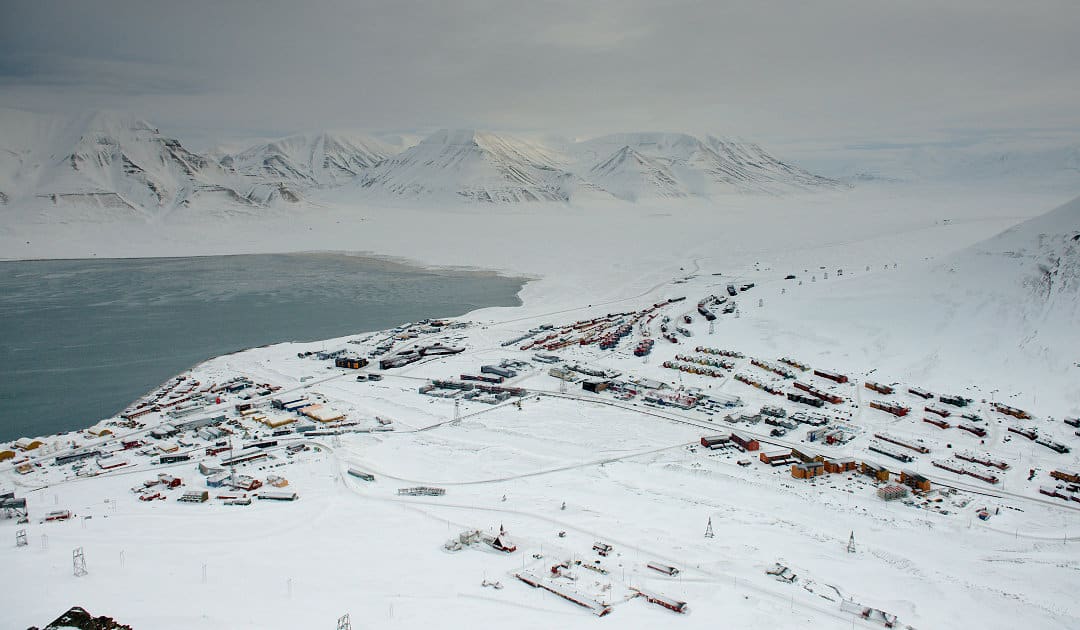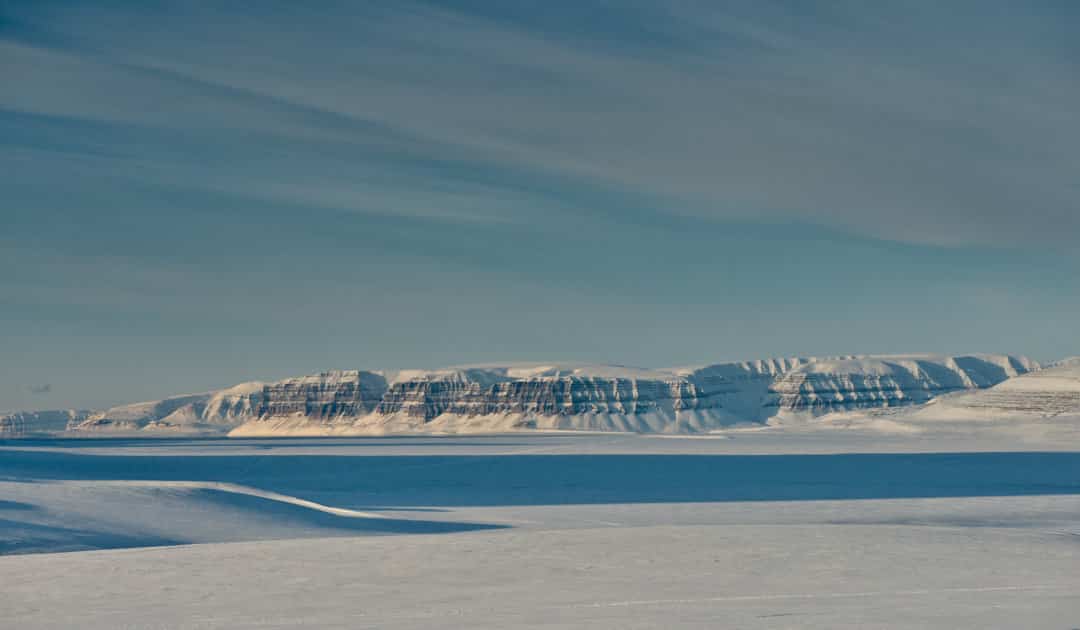
Polar bears, seals, Arctic foxes and reindeer are not the only mammals that have chosen Svalbard as their home. Around 2,900 inhabitants, most of them in Longyearbyen, also live on the Norwegian-administered archipelago. And while it used to be coal mining, tourism has now taken the top spot on the economic podium. The administration of Svalbard, the Sysselmannen, are responsible, among other things, for ensuring that Svalbard’s unique nature is as undisturbed as possible by human activities. Now a decision by the administration to protect fjords from traffic has caused some frustration among the public and local tour operators.
The decision of the Sysselmannen regulates motorized traffic, i.e. snowmobiles, to certain destination areas, which is used by tourists and the local population. The administration has decided to close three fjord areas to motorized traffic beginning March 15 through June 1. These are areas in the Tempelfjorden, Billefjorden and Van Mijenfjorden, which on the one hand can only be reached via routes over the sea ice and on the other hand are located near glacier walls. All snowmobile traffic is prohibited there. Exceptions can only be obtained via the approval procedure. The ban is temporary, as from June 1, the fjords will hardly be frozen anymore and there will hardly be any snow for touring.

“Sysselmannen made this decision to protect ice-dependent species from disturbance in these areas”
Kristin Heggelund, Head of Environmental Protection Sysselmannen pa Svalbard
When asked by PolarJournal, Kristin Heggelund, the head of Sysselmannen’s environmental protection department, explains: “The regulated areas are very important habitats for ice-dependent species. At the same time, these areas are the most busy when it comes to motorized traffic. This increases the risk of disturbing wildlife. Sysselmannen made this decision to protect ice-dependent species from disturbance in these areas.” Thereby, it refers to an assessment prepared by the Norwegian Polar Institute on behalf of Sysselmannen. Especially affected are ringed seals, which have their feeding and breeding grounds in the affected areas at this time of year. The ringed seals also attract polar bears, especially mothers with cubs from April onwards. Since at the same time the tourist season would start from March and also local inhabitants would go to these areas, which are only accessible by snowmobiles, to hunt, fish or look for recreation, the animals would be strongly affected by the noise and the people. Therefore, they are closed to protect the ice-loving species. “The Sysselmannen has made this decision to protect ice-dependent species from disturbance in these areas,” Kristin Heggelund writes in her response to us.
Specifically, motorized vehicles are no longer allowed to enter the back areas of the three fjords. Journeys in Billefjorden to Pyramiden in the forward area must take the most direct route over the sea ice and stops are only permitted to check the ice. What at first sight seems to be logical, understandable and reasonable, however, has caused some red heads among many residents of Longyearbyen and the local tourism industry. Because the decision means that tour operators, hunters and fishermen, hut owners and even researchers can no longer simply drive into these areas. Permits for exceptions have to be obtained and it is complained that it takes far too long to issue such a permit. Other stakeholders speak of an arbitrary decision without having really consulted the local stakeholders. The Sysselmannen are also being harshly criticized in the area of the consultation procedure. The administration had indeed launched a consultation call on January 26, where everyone had the opportunity to give their views to the administration. But the end of this call was already 16 February and thus for many too short to be able to deliver an adequate assessment. In addition, the administration is accused of picking out only suitable information from the report of the Norwegian Polar Institute and simply disregarding other essential aspects. Interesting fact: The Polar Institute itself had also sent a letter to the Sysselmannen during the consultation process. In it, hte institute draws attention to a study from Alaska that had shown that ringed seals would very quickly become accustomed to the sounds of snowmobiles. This study was not included in the Institute’s original assessment.
“No one wants mass tourism here, we all agree on that.”
Marcel Schütz, Spitzbergen Reisen AS

For the tourism sector, alread facing severe troubles, the decision of the Sysselmannen is a heavy blow. Many of the providers see the decision as insufficiently determined and not solution-oriented to the needs of the sector, which has been badly hit by the COVID measures. There are fears of a long-term restriction of tourism on Svalbard. This is because the latest decision reduces and channels traffic to a few areas. This will increase the pressure there on nature. This in turn could then lead to further closures. This also creates unintentional mass tourism, explains Marcel Schütz of Spitzbergen Reisen AS. “When many tours are restricted to a few routes, the number of guests increases there. This especially hurts us small group tour operators,” he continues. “Because our offer with multi-day tours is aimed at an intensive experience of Svalbard’s nature. With Sysselmannen’s decision, it will be harder for us to stand out from the simple day tours. We could thus be forced to offer simpler tours and focus on quantity instead of quality. This would encourage mass tourism. This is not what anyone here wants, we all agree.”
“As the responsible authority for the environmental management on Svalbard, however, Sysselmannen must make the decisions necessary to protect the Svalbard wildlife.”
Kristin Heggelund, Head of Environmental Protection Sysselmannen pa Svalbard
He and many of his colleagues say they want to continue operating in a sustainable and environmentally friendly manner in the future. But they also want more consideration for the industry, he said. Because “even in the UN Goals for Sustainable Development, economic growth, industry, innovation and infrastructure are included” Marcel Schütz explains further. “And although Norway is also carrying these goals, I think these aspects are missing here in Svalbard.” In fact, many of the consultations have also provided specific suggestions on how environmental protection and tourism could work together. In particular, Visit Svalbard, the official industry representative, had a specific solution for this season and proposed to cooperate again afterwards on a comprehensive regulatory package that could be supported by all sides. But none of these factored into the decision. “Sysselmannen understands that the current situation is challenging for the tourism industry,” writes Kristin Heggelund in her response to us. “As the responsible authority for the environmental management on Svalbard, however, Sysselmannen must make the decisions necessary to protect the Svalbard wildlife.”
Dr Michael Wenger, PolarJournal
More on the subject:







